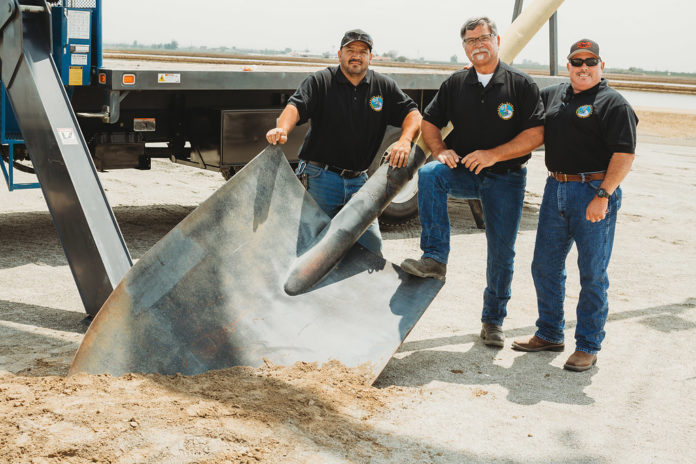 The Friant Water Authority board of directors met at the So Cal Edison/PG&E facility in Tulare on Thursday, February 27, 2020. Chairman Chris Tantau called the open session of the meeting to order about 10:00am. Lindsay-Strathmore ID Director Cliff Loeffler lead us in prayer to get things on the right track. There was no reportable action from closed session and during the review of the minutes Eric Limas, General Manager Lower Tule River Irrigation District pointed out he was listed as GM of Delano Earlimart ID. DEID isn’t a FWA member. So that was fixed.
The Friant Water Authority board of directors met at the So Cal Edison/PG&E facility in Tulare on Thursday, February 27, 2020. Chairman Chris Tantau called the open session of the meeting to order about 10:00am. Lindsay-Strathmore ID Director Cliff Loeffler lead us in prayer to get things on the right track. There was no reportable action from closed session and during the review of the minutes Eric Limas, General Manager Lower Tule River Irrigation District pointed out he was listed as GM of Delano Earlimart ID. DEID isn’t a FWA member. So that was fixed.
Action Items
The consent calendar was approved and the first action item dealt with Operations & Management. Executive Officer Jason Phillips presented the item to the board. All of the contractors who get water from the Friant Kern Canal deal with O&M but not all of them are FWA members. The motion would allow non-FWA contractors to participate in a limited manner on O&M items. While not a change in who can vote, the nonmembers can speak to the O&M issues and their opinions will be included in the minutes.
Over the years Friant – the entity representing FKC users – has splintered, morphed, divided like an ameba and then reformed. Right now there is FWA and the South Valley Water Association. This offer is aimed at bringing SVWA contractors back to the table. Tantau said this is one of the subjects discussed at the board retreat. He said there is trial membership that would allow other Friant contractors to attend closed session O&M items. Of course there are dues associated with belonging to either entities. Another consideration is the effort to change the Joint Powers Agreement. Each change in membership impacts the legal makeup of a JPA.
Two SVWA directors were present, Exeter ID’s Joe Ferrara and Ivanhoe ID’s Doug Phillips. Matt Leider Teapot Dome ID asked if the SVWA districts can find value in the FWA proposal. Director David Brown Orange Cove ID asked, “Why don’t you join?” Ferrara and Phillips both said for their small districts the O&M is about the only thing that really impacts them. Ferrara said EID didn’t leave FWA to join the SVWA, it left Friant because it didn’t feel represented.
Eric Quinley, GM DEID asked if this offer was a proposal from the board members or the staff. Tantau said there wasn’t a clear consensus by the board and this is a staff proposal. Jason Phillips responded there are as many definitions of what constitutes an O&M matter. He asked rhetorically should someone paying O&M have a voice and the answer is yes. He followed up with saying if that was the only issue that would be something to discuss – changing the JPA. But with subsidence, title change, a 20 percent US Bureau of Reclamation allocation currently it would be too distracting to do more. Phillips said this is the first step.
Loeffler said his first FWA meeting was the meeting when the unity blew up. He said his district is sticking with FWA because it is the legal entity recognized by the USBR are representing the Friant Kern Canal. Tantau called for the question and the motion passed.
The next item was presented by FWA attorney Don Davis. Davis said Ian Buck McLeod was working for Stantec Engineering to track water project operations and on-call water supply strategic assessments. Now McLeod works for FWA and Davis was asking for the board to approve MBK Engineers to fill these duties. Since it costs more than $50,000 the board has to weigh in. McLeod is the replacement for Jeff Payne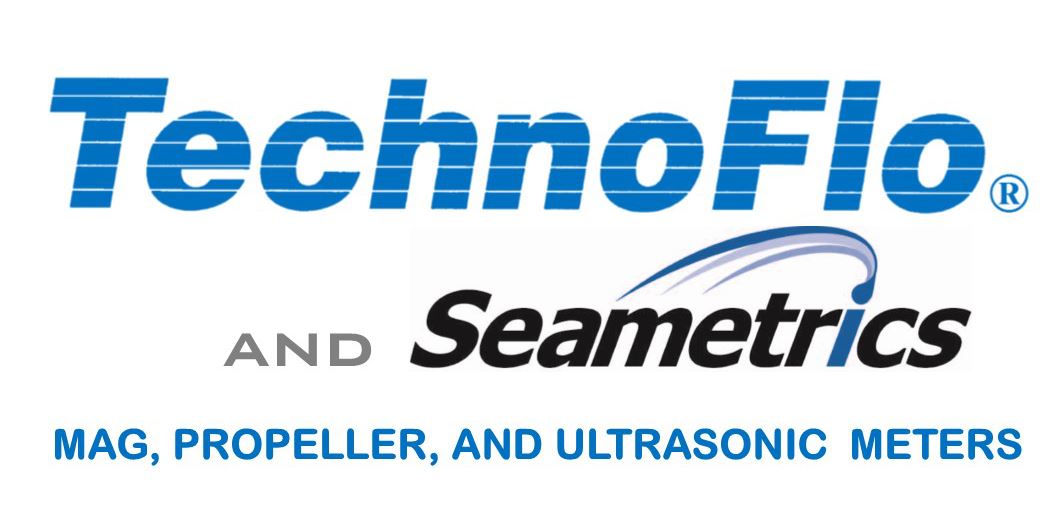 who recently left FWA to go to work for the USBR. This will be under the Master Professional Services Agreements. This isn’t a new $50,000 cost, it’s coming from already allocated funds in a different account. Tantau called for the question and pointedly asked the Non FWA directors for their opinions.
who recently left FWA to go to work for the USBR. This will be under the Master Professional Services Agreements. This isn’t a new $50,000 cost, it’s coming from already allocated funds in a different account. Tantau called for the question and pointedly asked the Non FWA directors for their opinions.
The next item was presented by COO Doug DeFlitch dealing with approval of a temporary agreement for conveyance costs with Patterson ID and Banta Carbona ID for recapture of San Joaquin River restoration flows. Those flows ad up and in a year like this an extra 60,000 a/f is welcome. The board approved. Someone asked if this was an O&M and although this wasn’t strictly an O&M the new deal is the nonmembers were asked for their vote for the record.
Reports
Updates were next and the printed agenda has an estimated time for each section. For instance: the action items were expected to last 30-minutes or so. The updates and reports section listed the estimated time as 3-hours. Tantau assured us this was typo even if it felt like an accurate estimate of 30-hours.
The first report was the big one; FKC capacity correction project – which is the what the official name for fixing the kink in the canal. Phillips said this has to do with gaining investments to pay for fixing the canal. He stressed this is not an investment opportunity for companies and private investors, rather funds coming from Friant contractors. There are also federal loans with very good terms that wouldn’t have to start being paid back until the project was completed. I think Phillips said up to $200 million. The case is there could be some outside federal and even possibly state funding but the self-financing is under control of the board. Self-financing will have some strings attached, like paying back loans, but those are strings as opposed to chains as could happen if the government gets involved in certain funding options.
For the contractor/investors would have the benefit of securing capacity for that section of the canal. Investors could also charge others for using their capacity to help offset the investment upfront costs. That makes things a little sweeter. Lower Tule’s Director Josh Pitigliano asked if GSAs can invest. Phillips said if they partnered with Friant contractors. Even landowners could partner with districts. It didn’t sound like FWA was going to micromanage how the districts secured their investment funding. Phillips also said while the districts downstream are very interested anyone along the canal from Madera/Chowchilla down can be involved. He pointed to Porterville ID as it has water trades further south past the kink. (Friant folks like to call the subsidence impacted area the “pinch point”. I think calling it the kink sounds better.)
Kent Stephens, Kern Tulare Water District Director asked if the cost is about $400 million and all contractors agreed to pitching and fix the problem – would this be a moot point. Phillips said in the past the Bureau would pay up front and the contractors would pay it back in O&M fees from the Central Valley Project members benefiting. Now, this kink falls into the extraordinary O&M category. The San Luis Delta Mendota Division of the CVP is having a somewhat similar discussion involving pump windings. Big costs, extraordinary O&M.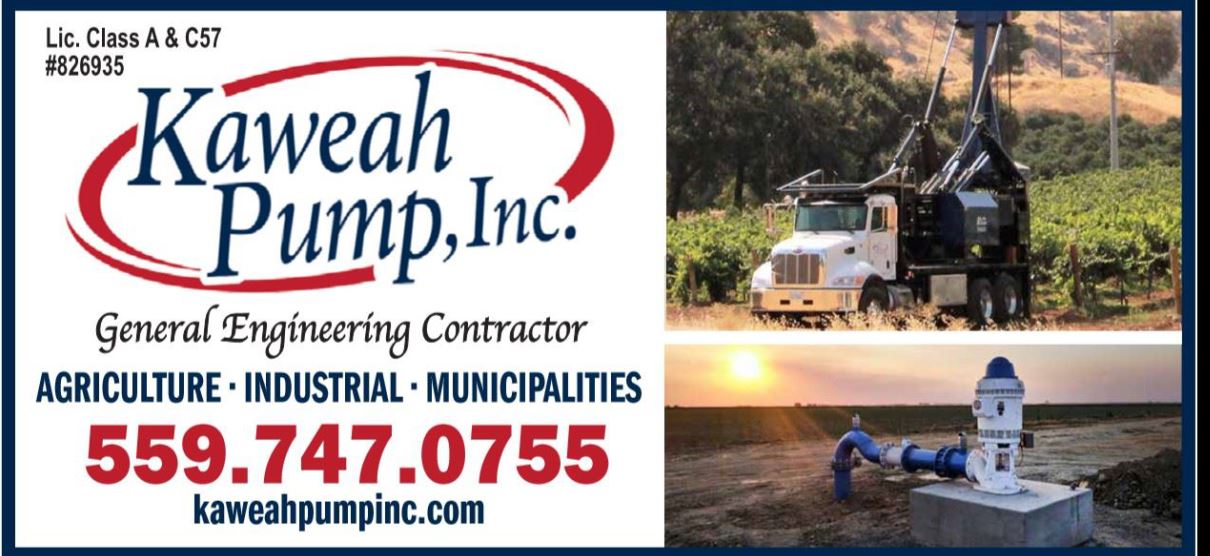
Davis reported on a draft of the OM&R transfer agreement for the KFC and associated works. He was asking for comments by March 6th so negotiations with the Bureau can begin. Madera ID and Chowchilla Water District have asked to sit in on the talks as they are interested in a title transfer of the Madera/Chowchilla Canal. Also the power plant folks want to listen in as well.
Attorney John Bezdek has been helping Friant with the specialized area of the law that covers title transfer of federal facilities. He took the podium and introduced a former USBR employee named Brian Person now working for AECOM. Person presented the board with an assessment of what is involved in this. He said local engineer Dennis Keller has been very helpful in developing the ideas but Keller has yet to review the latest paper being presented this morning.
Person said there are off ramps built in and the transfer will be easier due to the Dingell Act. I know, it does sound made up but there is such a piece of federal legislation which removes the literal need for an act of congress to transfer title of federally owned items. The FKC is more than 50-years old and that will require some historical review – no kidding. Person showed a possible itemization of costs the Bureau will charge for this. It’s “only” $542,000 at the high end and some of that can be waved because of ongoing expenditures by Friant.
Person went over what some of the outcomes need to be considered. A NEPA probably won’t be needed nor an Endangered Species Act – Section 10 but it could kick in if a kit fox because aquatic. CEQA might kick in also. Keller brought up some California Division of Drinking Water concerns. Person said the Bureau was very adamant the point of delivery doesn’t have to change. Somehow or other the turnouts are appurtenant in this deal.
He also said the Bureau just doesn’t’ exercise eminent domain. But what if high speed rail tried to get its nose and nuts in the middle of this – the Bureau still has a contractual interest. During the earlier portion of the HSR efforts the state was telling irrigation and water districts they’d have to pay for HSR for modifying infrastructure where their paths crossed. As it turned out when Friant was built much of the connecting canals and conveyance systems were included in the construction. And while this system was paid for decades ago the title wasn’t transferred from the feds to the districts. Those districts would tell the HRS folks to discuss that with the Bureau and the HSR were never heard from again.
Bezdek said there have been questions about the Water of the US and that won’t change, nor will the maintenance. Davis added Friant has met with the Army Corps of Engineers and said the WOTUS isn’t really a concern at all. Person was asked how long would it take and he said more or less two years. Much quicker due to the Dingell Act.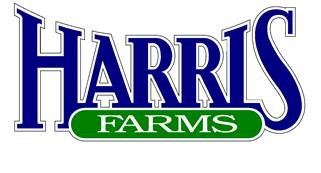
Ferrara asked why the transfer wouldn’t go to all the contractors instead of FWA. Bezdek said because FWA is the legal entity recognized by the federal government. Ferrara then asked how the FWA directors felt about charging all the contractors FWA and non FWA members about paying a big chunk of change to fix the canal and then handing this asset over to another party. Bezdek said right now the feds own the canal but the contractors are responsible for O&M. That won’t change under title transfer. Phillips said he believes under the Dingell Act the entity eligible would have to be Friant as it is recognized. Ferrara was also concerned about financing. He said if the contractors have to raise the money how the title transfer will impact this. Phillips agreed this is one of the issues that need discussion. He said the question is; what are the benefits of the feds or the FWA having title; he said so far a study of those benefits accrue to the side of local ownership.
Stevens said having a unified goal should be the goal. Sean Geivet, GM of Porterville, Saucelito and Terra Bella IDs asked since FWA has no assets how this will be reflected on the books. Person said while this wasn’t addressed in the latest report he believes it will be listed as an asset on FWA’s books. I believe what Geivet and others wanted to know was the impact of this ownership on borrowing – as an example. And in a follow up question by the City of Fresno’s Brock Buche it was answered FWA’s having title wouldn’t trigger any property tax obligation.
Because Friant pays San Luis Delta Mendota Water Authority for the Exchange Contractor’s share of O&M FWA has to get some reserves because with a 15 percent allocation for South of Delta CVP contractors it could go up.
SJV Water Blueprint
Phillips said the economic impact by Dr. David Sunding will soon be released. So will the Blueprint implementation strategy. So, stay tuned. It was a shorter presentation than I had expected. But the meeting was running long. At this point we took food and turned this into a working lunch. Pilaf, beef, chicken breast
Johnny Amaral, FWA Director of External Stuff reported on last week’s visit to the Valley by Secretary of Interior David  Bernhardt. I got to meet Secretary Bernhardt and he’s taken the time to learn about what is happening with water in this fine Valley. President Donald Trump also touched down the next day in Bakersfield. I didn’t get to meet him. Amaral said it had been a long time since a President mentioned the Friant Kern Canal and Trump did so in a positive way. The Biological Opinions Record of Decision for the Delta was signed this past week and so far the reviews on the ag side were positive. The Bureau came out with an early allocation and although it wasn’t much (20 percent I believe) it was earlier. It used to be allocations didn’t appear until it was too late to do any good in too many years.
Bernhardt. I got to meet Secretary Bernhardt and he’s taken the time to learn about what is happening with water in this fine Valley. President Donald Trump also touched down the next day in Bakersfield. I didn’t get to meet him. Amaral said it had been a long time since a President mentioned the Friant Kern Canal and Trump did so in a positive way. The Biological Opinions Record of Decision for the Delta was signed this past week and so far the reviews on the ag side were positive. The Bureau came out with an early allocation and although it wasn’t much (20 percent I believe) it was earlier. It used to be allocations didn’t appear until it was too late to do any good in too many years.
CVP Cost Allocations
A gentleman from the Bureau who is way deep into accounting gave a presentation about Central Valley Project cost allocations. M&I went up and ag went down. It was a lengthy report full of wonderful spreadsheets and tables. It is available online and only about 40-years late. But for many years the Bureau’s mission wasn’t supported by various administrations like it is now.
McLeod gave a water report and said the NASA ASO is back on the runway. He said a lot of things and I apologize for not giving him a more detailed coverage but he said Shasta temperatures are worrisome at this time. He said the new biops require meeting temperature goals a bit more stringently but could allow for water later in the year.
Also honorable mention to the new Cooperating Operations Agreement. McLeod said the recently revised COA was more beneficial to the CVP in dry years like is shaping up to be. It could make the difference in avoiding a call on Friant supplies to the Exchange Contractors. Phillips said a red flag is under a very likely scenario there won’t be enough water in San Luis Reservoir later this year to meet the first tier deliveries of the Ex Con and wildlife refuges. He said his is in contact with Ex Con GM Chris White and they are doing what they can to prevent a call on San Joaquin River water. Phillips also echoed McLeod in praise for the new COA between the CVP and the State Water Project.
DeFlitch went into a little more detail about how the conditions determine the allocations. USBR’s Rufino Gonzalez gave the official line. February has not been a good month for precipitation. Millerton Lake got zero percent, not a good figure at all. If I heard correctly we’re looking at possible year much like 1977. That wasn’t a good year.
Michael Jackson is the Bureau’s top man in the Friant Division and he offered to answer questions; what would be the deadline for Ex Con to call on Friant supplies? Jackson said there is no timeline. It could happen in the middle of the irrigation season this summer, but as Jackson pointed out it is the Bureau that makes the call, not Ex Con.
Temperance Flat
Bill Swanson of Stantec Engineering has been working on the Temperance Flat Project since I began writing these reports 20-years ago. There has been a MOU group formed to look at the benefits and pitfalls of building Temp Flat Dam. He and I spoke earlier during closed session. I told him I had the feeling Temp Flat was flat lining. He said if it is to be operated simply as an extension of Friant Dam the benefits weren’t jumping off the page. However, with a couple of other parts of the puzzle being introduced over time there are some new opportunities on the near horizon. As Swanson told the us at Friant the $3 billion cost to produce an extra 10,000 or 15,000 a/f per year. There has been some modeling that figures in some projections in the place of the missing puzzle pieces.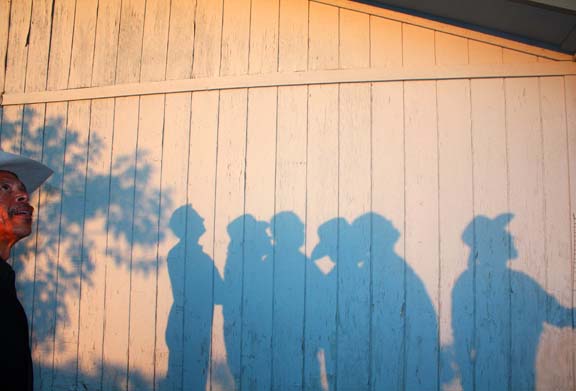
If only Friant contractors used the new storage space there would be less benefit in both amount of supplies and costs. But with SGMA now figuring in things look better. Should the SJV Water Blueprint behaves has hoped Temp Flat will add a flexibility to make matters much better and dramatically improve both costs and supply for recharge and surface use.
Swanson said this model was very conservative, almost a worst case scenario and still there are improvements as the other pieces fall in place. So, looking at Temp Flat in a new way is warranted it is still a ways off time-wise. Swanson said at a recent Temp Flat meeting the Bureau has decided the project merits further pursuit but the time isn’t yet right. So, Temp Flat is still going but there will be a deferral on the feasibility study for a couple of years. So, is Temp Flat dead? No. Is it on life support? Kind of. Should you let cynicism rule your mind you won’t be faulted in this case. And that was that.
DISCLAIMER OF RESPONSIBILITY; Waterwrights strives to provide it’s clients with the most complete, up-to-date, and  accurate information available. Nevertheless, Waterwrights does not serve as a guarantor of the accuracy or completeness of the information provided, and specifically disclaims any and all responsibility for information that is not accurate, up-to-date, or complete. Waterwrights’ clients therefore rely on the accuracy, completeness and timeliness of information from Waterwrights entirely at their own risk. The opinions expressed in this report are those of the author and do not represent any advertisers or third parties.
accurate information available. Nevertheless, Waterwrights does not serve as a guarantor of the accuracy or completeness of the information provided, and specifically disclaims any and all responsibility for information that is not accurate, up-to-date, or complete. Waterwrights’ clients therefore rely on the accuracy, completeness and timeliness of information from Waterwrights entirely at their own risk. The opinions expressed in this report are those of the author and do not represent any advertisers or third parties.
ALL RIGHTS RESERVED. Copyright 2020 by Don A. Wright
FRIANT WATER AUTHORITY
854 N. Harvard Ave., Lindsay, CA 93247, Office 559/562-6305 Email:information@friantwater.org www.friantwater.org
The Friant Water Authority is a Joint Powers Agreement with 15 districts to operate and maintain the Friant Division of the Central Valley Water Project. Water from the San Joaquin River is diverted at Friant Dam at Millerton Lake to the Madera/Chowchilla Canal to the north and the Friant/Kern Canal to the south. More than one million acres of mostly family farms and numerous communities get their surface supplies from the Friant Division. Staff: CEO Jason Phillips, COO Doug DeFlitch, CFO Don Willard, Superintendent Chris Hickernell and Attorney Don Davis





